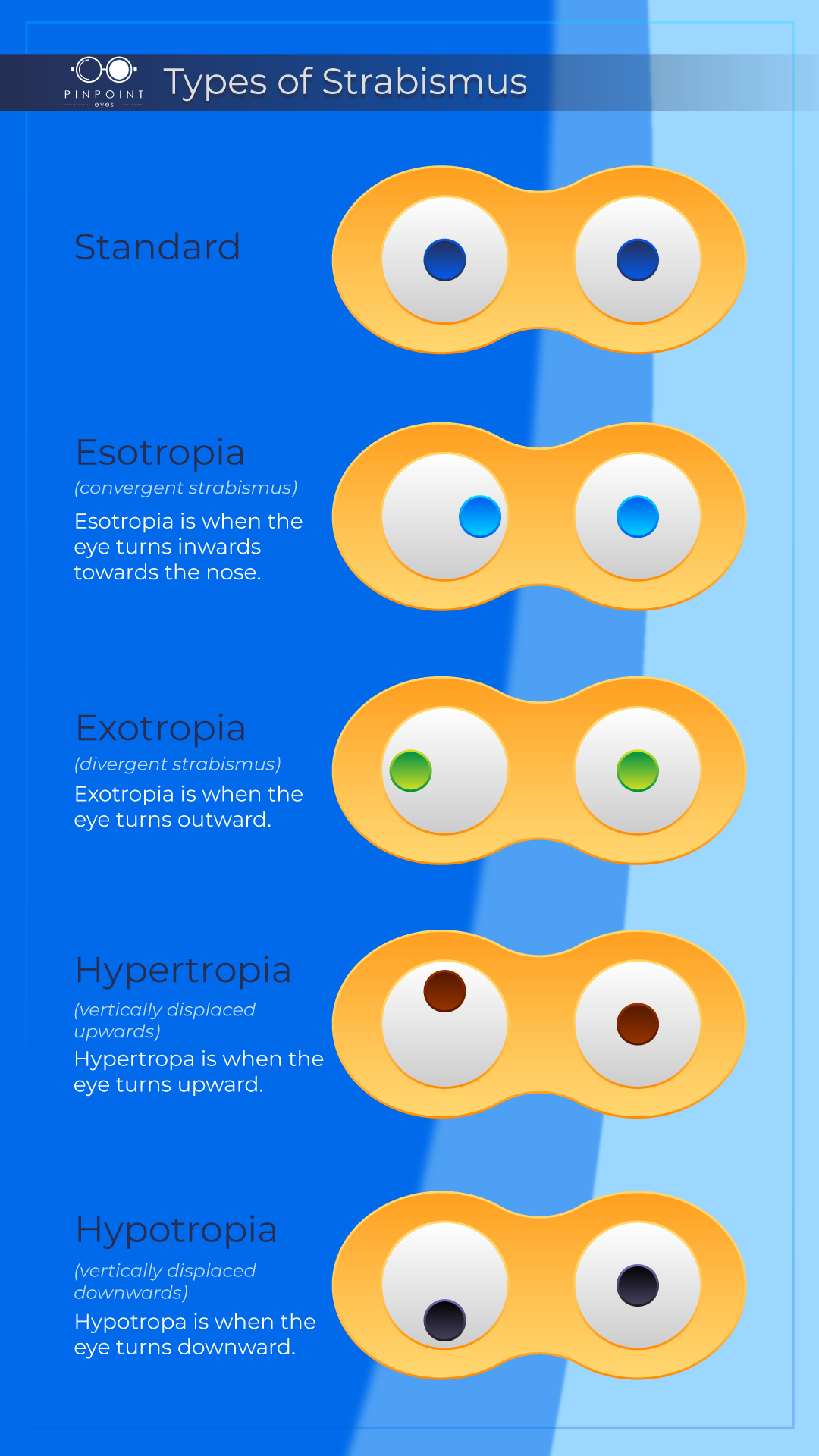
What is a Lazy Eye?
Strabismus, or “lazy eye,” is a condition where one eye looks directly at the object you are viewing, while the other is misaligned.
Some characteristics of strabismus include:
- One eye’s inability to attain binocular vision with the other
- Issues can be constant or intermittent
- Often called a “lazy eye,” “cross-eyed,” or a “squint”
- May lead to amblyopia
What Causes Strabismus?
Strabismus may develop due to problems affecting:
- The muscles of the eyes
- The nerves associated with the eyes
- Or a region of the brain responsible for eye movements
While there is no one specific cause, head injury, cerebral palsy, genetics, and congenital changes, amongst others, have all been reported as potential contributors. Children who suffer from this ocular condition are at risk of poor visual development, as the condition interferes with a patient’s binocular vision (depth perception).
Click Here to read a more in-depth explanation of the causes of strabismus.
Types of Strabismus
The 4 different types of strabismus are classified according to the direction of misalignment of the eye. They are Esotropia, Exotropia, Hypertropia, and Hypotropia, with Esotropia is the most common.

How Common is Strabismus?
Strabismus is estimated to affect 6% of the population, including children.
Current Treatments for Strabismus
While strabismus is most common in children, it can be found in adults with traumatic brain injury, history of cerebral vascular accidents, etc. Luckily, it is treatable at any age. Current treatments include:
- Glasses
- Conventional occlusion (eyepatch)
- Surgery
- Botox injections
- Atropine penalization (drops)
Current Limitations in Treating Strabismus
The greatest limitation when treating strabismus comes from measuring the degree of deviation of the weaker eye. Currently, measurements are based on observing the eye at a resting state and while focusing on a distant object or having a medical provider estimate the degree of deviation using different prisms placed in front of the patient’s eye, in trial and error form, to bring the eye into alignment. This is the current gold standard examination known as the prism diopter examination.
Quite often, surgical intervention is recommended, which yields roughly a 50% success rate. This leaves patients with recurrent strabismus and need for surgical correction due to eye measurement errors, sagging of muscle tendon, differences in placement and tightening of the sutures, etc. Other treatment modalities such as atropine drops require assistance to place medicated drops in the patient’s eye which causes loss of visual acuity temporarily and is associated with side effects as is any medication. Botox is another trending therapy but is invasive and again, only provides possibility of temporary improvements that may require higher doses and pose a significant risk of side effects as well. Of the treatments, patching is the least invasive method, however patients are often be non-compliant.




Pingback: Botox as a Treatment for Strabismus | PinpointEyes
Pingback: Ocular Patching as a Treatment for Strabismus | PinpointEyes
Pingback: Surgery as a Treatment for Strabismus | PinpointEyes
Pingback: What Causes Strabismus? | PinpointEyes
Pingback: Amblyopia (aka "Lazy Eye") | PinpointEyes
Pingback: What is Amblyopia? | PinpointEyes